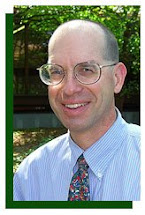The general public does not have an adequate understanding of conservation terminology and is not influenced by conservation messages directed to them. Respondents were asked to give their level of understanding of a list of 13 conservation terms:
most said they understood: conservation, natural resources, and water quality;
1/3 said they didn't understand: technical assistance, wetlands, and stewardship;
1/2 or more said they didn't understand: biodiversity, locally led conservation, best management practices, sustainable agriculture, watershed, nutrient management, and nonpoint source pollution.
Public understanding of conservation issues is largely based on popular opinion of the day.
Consumers generally don't think in terms of private land conservation or associated benefits.
Respondents liked the statement 'Conserving natural resources for our children and future generations.'
The statement most liked by respondents was 'Helping citizens become better stewards of natural resources in their own backyards.'
Respondents recommended the primary focus be on local government involvement with state and federal support.
Respondents said that nature-oriented messages and appropriate graphics have strong appeal.
Respondents were concerned about the potential negative impact conservation efforts may have on jobs and business success.
Emphasize water quality in communication efforts, as it is a well understood and important issue.
Use the phrase natural resources freely as it is a well understood term.
Use the term conservation in communication efforts, but provide some explanation. This explanation must emphasize conservation on private lands because consumers today generally limit their interpretation to that of preservation related to public lands.
When using the locally-led conservation concept make sure to explain what it means.
Identify partnership entities who have an interest and ability to communicate similar messages.
Work the volunteer element into outreach efforts.
Don't make the public choose between conservation and business success.
Specify the benefits of private land conservation, such as wildlife habitat, water quality, air quality, tourism, aesthetics, and recreation (fishing and hunting).
The National Association of Conservation Districts coordinated the research in cooperation with the Natural Resources Conservation Service. Marketing Horizons, Inc., of St. Louis, conducted the research during July, 1997, and prepared the final report.


No comments:
Post a Comment